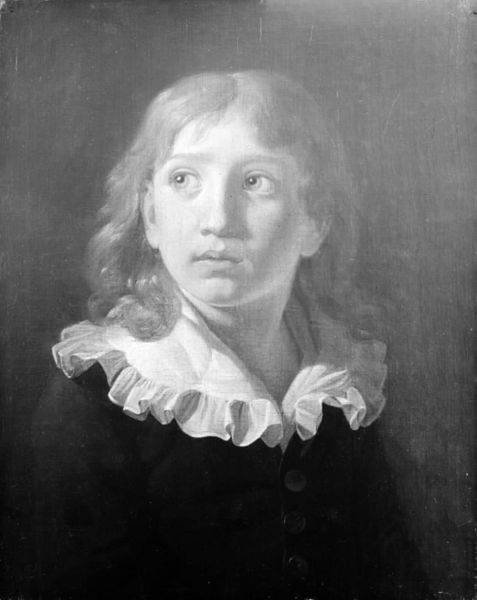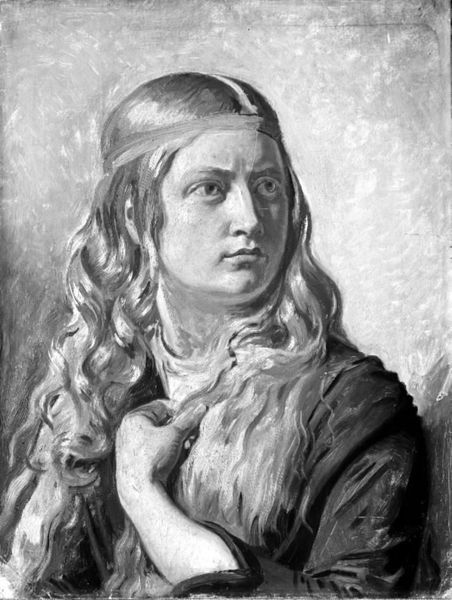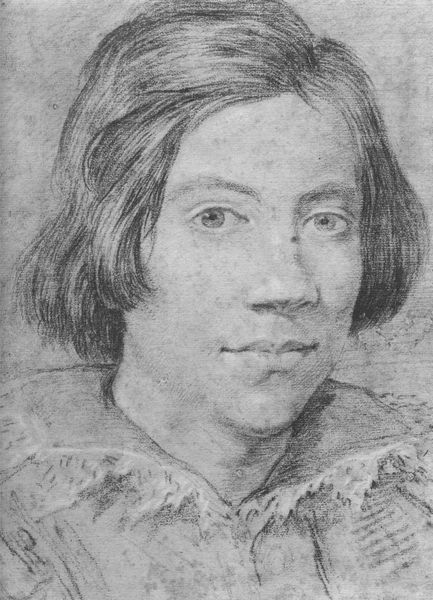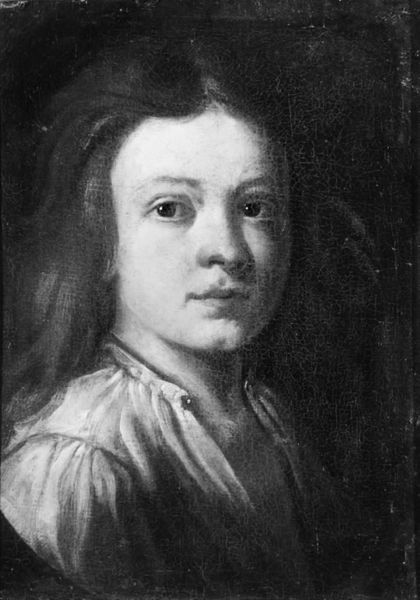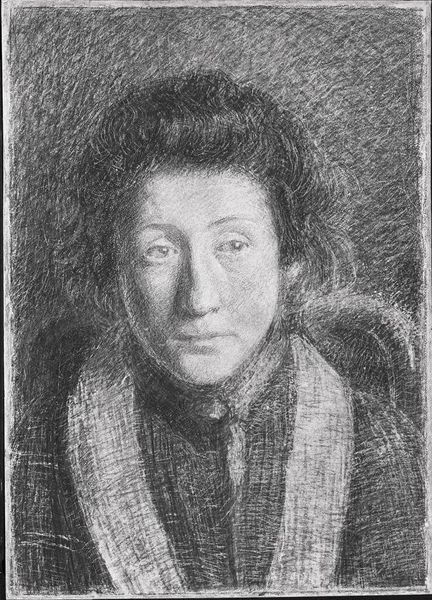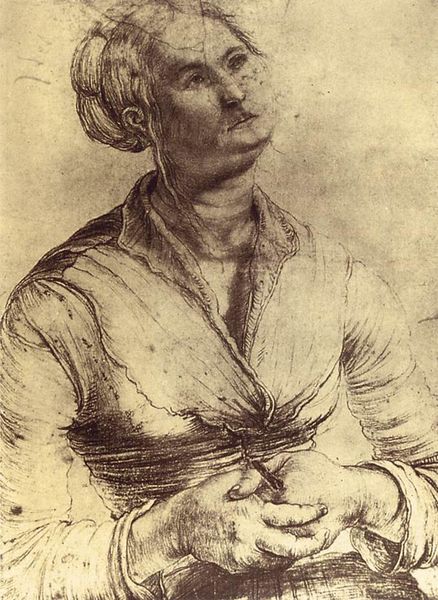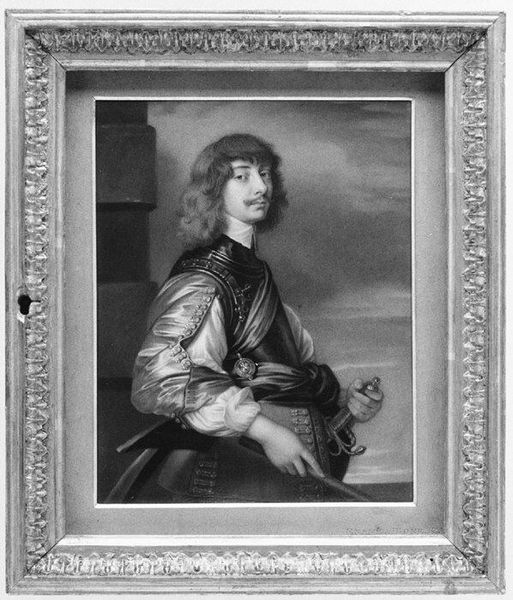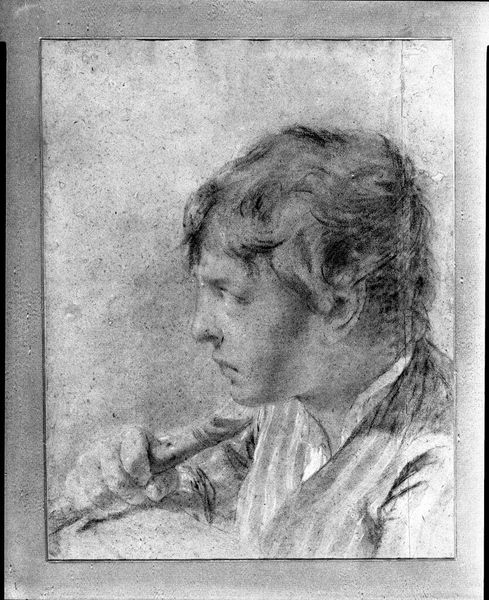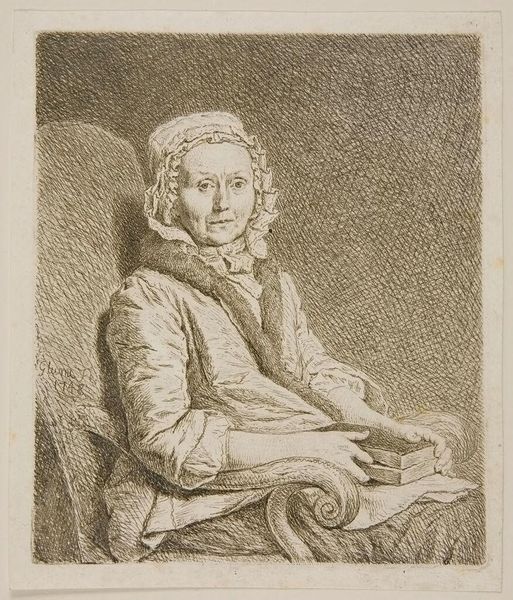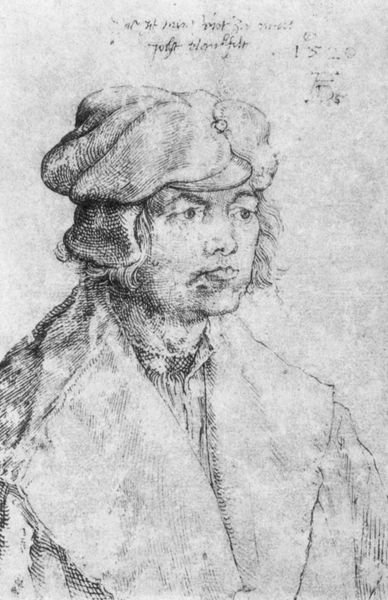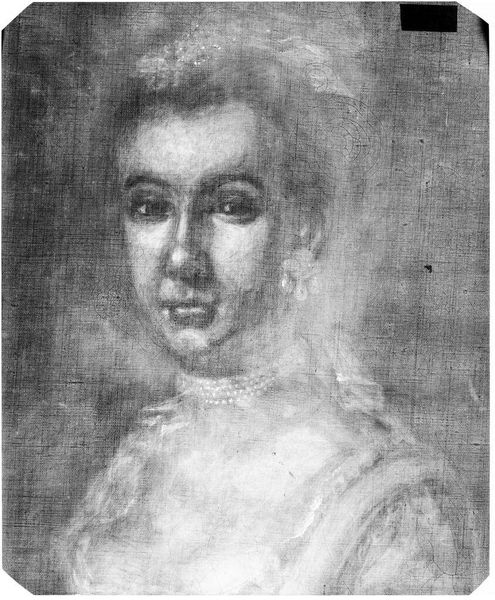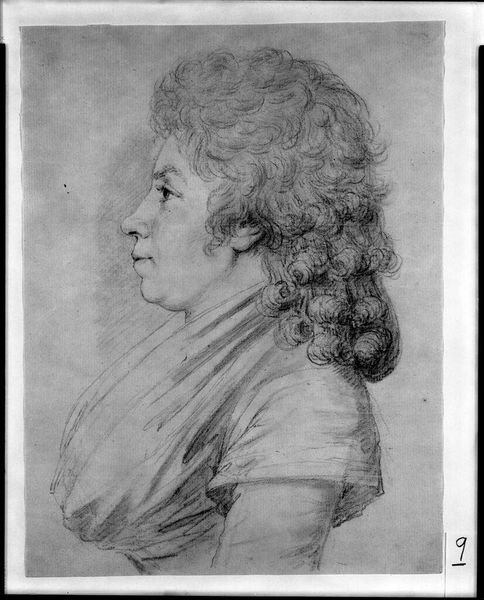
painting, plein-air
#
portrait
#
portrait
#
painting
#
plein-air
#
figuration
#
realism
Dimensions: 56.5 cm (height) x 48 cm (width) (Netto)
Editor: Here we have Michael Ancher’s "A Girl in a Red Dress" from 1901, a painting. While the title suggests a splash of color, the work seems to be in monochrome, giving it a rather stark feel. What stands out to you as you consider it? Curator: The absence of color ironically intensifies the girl’s presence. Consider red’s traditional associations: passion, revolution, lifeblood. Stripping that away prompts a deeper consideration of what 'redness' signifies beyond the literal. It is absent but heavily implied, wouldn't you say? Editor: I hadn’t thought about it that way! So, the missing color adds a layer of symbolic weight? Curator: Precisely. The red becomes a spectral presence, a cultural echo. Note how Ancher uses light and shadow. It isn't merely descriptive; it sculpts her face, imbuing it with an almost haunting quality. Do you find a kind of vulnerability there? Editor: Yes, especially in her eyes. They seem both innocent and knowing, as if she holds some untold story. Curator: And what might the dress, even without its defining color, represent in that story? Garment as identity, as societal constraint perhaps? Think of other symbolic depictions of young women during that time. Is Ancher participating in or challenging those visual tropes? Editor: I guess I assumed it was simply a portrait, but there's much more going on beneath the surface. I see now how Ancher invites us to look beyond the obvious, to consider the psychological and cultural weight of even a seemingly simple image. Curator: Exactly. By engaging with the absence, we confront deeper, more resonant meanings. Art becomes a mirror reflecting not just what is, but what could be.
Comments
No comments
Be the first to comment and join the conversation on the ultimate creative platform.
